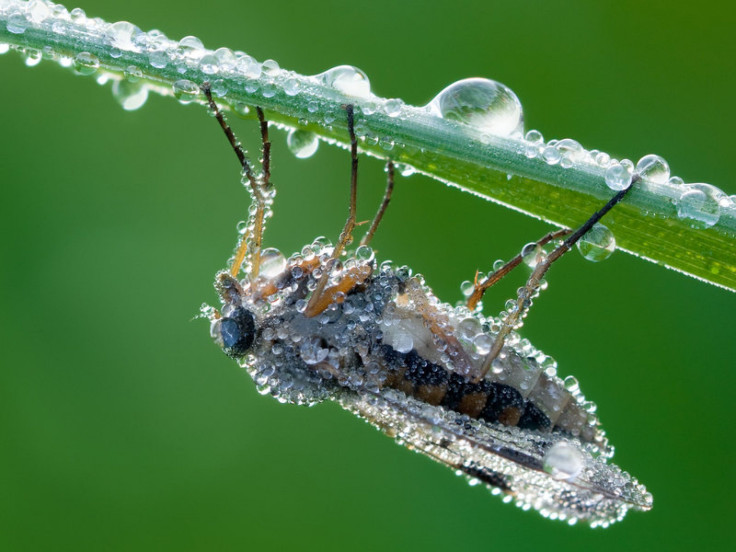Cicada To Awaken From 17-Year Slumber, 'Jumping' Dewdrops Will Keep Their Wings Clean

It sounds a bit like a fairy tale: The tiny princess awakens from her enchanted 17-year sleep, yawns, stretches and washes the sleep from her face with a dewdrop. Except in this case the “princess” has six legs, giant bulging orange eyes and a hard brown exoskeleton.
Cicadas are set to emerge soon across the East Coast after a 17-year hibernation. When the time is right, they’ll emerge from the ground as nymphs, then molt into their winged adult forms. From there, time is of the essence -- they’ve only got a few weeks to mate and give birth before they die, leaving their babies behind for another long dirt nap. And while a bit of pollen might be a trifling annoyance to a person, it could mean some serious flight impairment for a cicada if it gets stuck to a wing. (You can also substitute dirt or any other contaminant for pollen.) Plus, cicadas have another problem: Their legs are usually too short to reach those troublesome spots.
Some scientists had assumed cicada wings were cleaned by falling raindrops, but there’s no guarantee that there will be precipitation during the cicada’s brief lifespan. What if there was another way?
New research from Duke University published in the Proceedings of the National Academy of Sciences shows how cicadas clean their wings without lifting a claw or relying on rain. Instead, they benefit from an automatic self-cleaning system thanks to morning dew, which helps wash away dust, dirt and other contaminants that won’t come off with gravity, wing vibrations or wind.
“These insects commonly live in areas where there is little rain over an extended period of time,” coauthor and James Cook University engineer Gregory Watson said in a statement. “However, the areas are humid, which provides the tiny dew droplets needed to 'jump clean' their wings."
High-speed video taken by Duke engineer Chuan-Hua Chen and his team shows that dewdrops on a cicada’s wings coalesce and automatically “jump” off of the water-repellant surface of the cicada’s wing. The surface of a cicada wing is water-repellant thanks to its natural structure, studded with little bumps and points. Water droplets that land on the wing are held above the surface by those points, leaving a little cushion of air – Chen compares it to how an air hockey puck floats above a table.
Chen thinks the cicada’s automatic cleaning strategy could point the way to automatically self-cleaning human inventions.
"Self-cleaning surfaces using the jumping-drop mechanism can work at any orientation, which is a huge advantage for applications with unfavorable orientations with respect to gravity, such as mobile electronics and building roofs,” he said in a statement.
SOURCE: Wisdom et al. “Self-cleaning of superhydrophobic surfaces by self-propelled jumping condensate.” Proceedings of the National Academy of Sciences published online 29 April 2013.
© Copyright IBTimes 2024. All rights reserved.





















